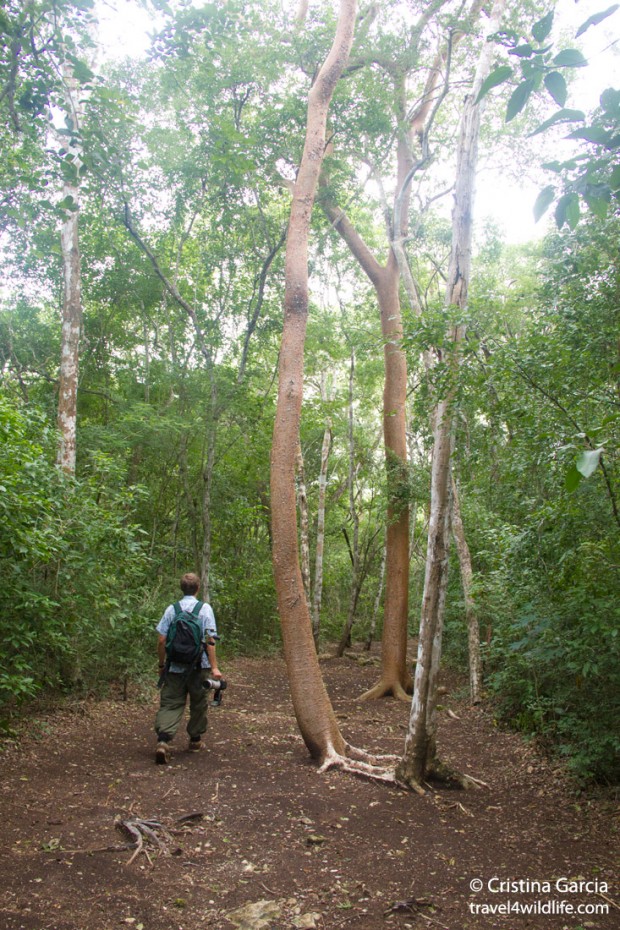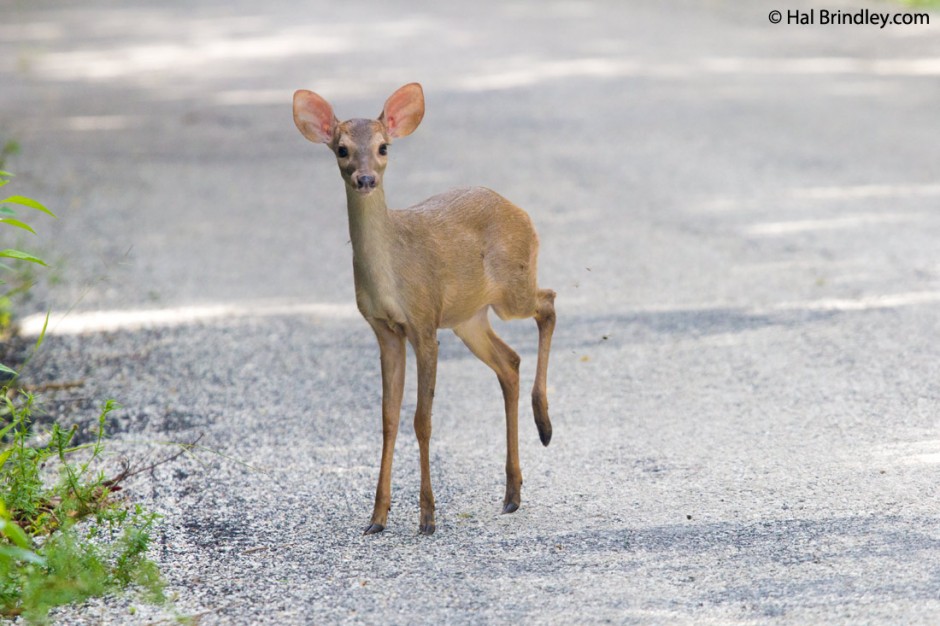Where Indiana Jones Would Have Stayed
If you dreamt of being Indiana Jones when you were kid, you can finally live out your fantasies at the Maya ruins of Calakmul. It is a real-life lost city, an ancient Maya metropolis buried deep in the jungle in the Yucatan Peninsula of Mexico, and it’s crawling with tropical forest creatures including one of the strongest jaguar populations left in the world. But Calakmul is not easy to get to. It is far off the tourist trail and it doesn’t even show up on most maps. There is only one hotel within a 60 kilometer radius and that is Hotel Puerta Calakmul.
Location of Puerta Calakmul
Hotel Puerta Calakmul is situated in the Calakmul Biosphere Reserve. The reserve is part of a vast tract of tropical forest that stretches into Guatemala and Belize. There is one long, lonely road that reaches down into the heart of the jungle and it ends at the Maya ruins of Calakmul. The road begins at Hotel Puerta Calakmul, next to the turnoff from Highway 186.
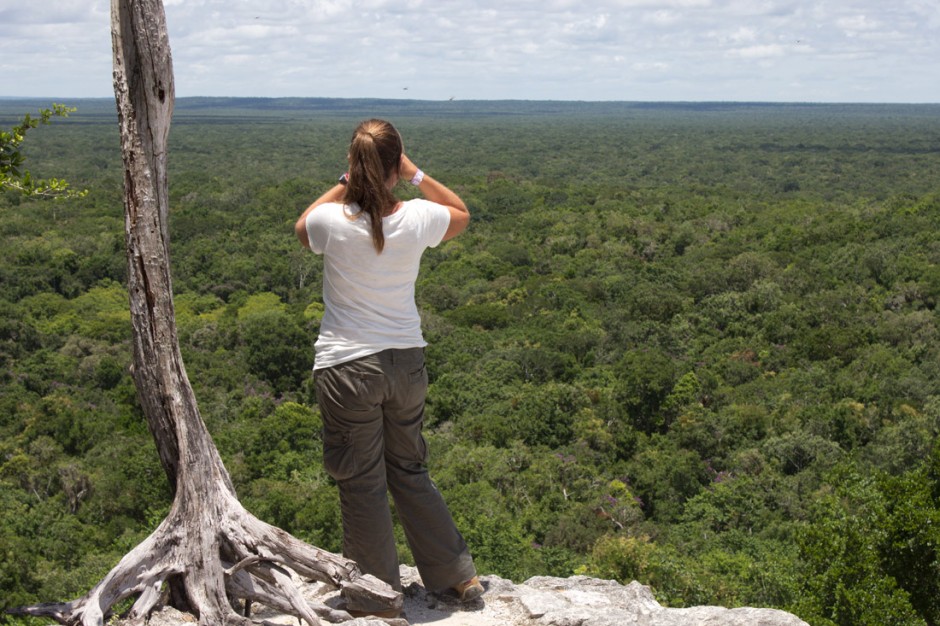
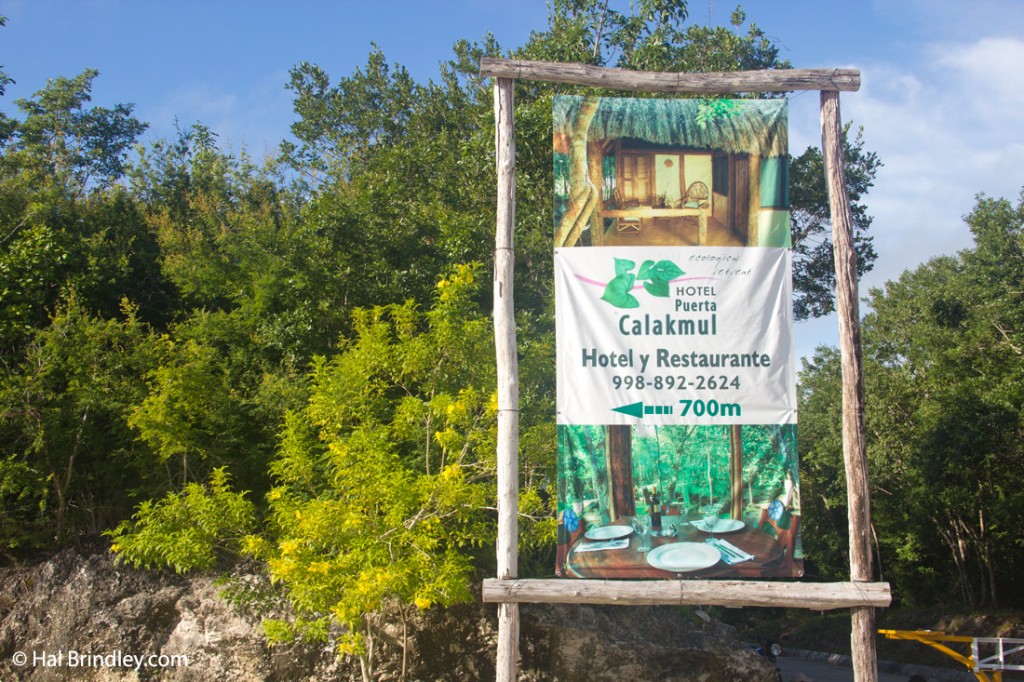
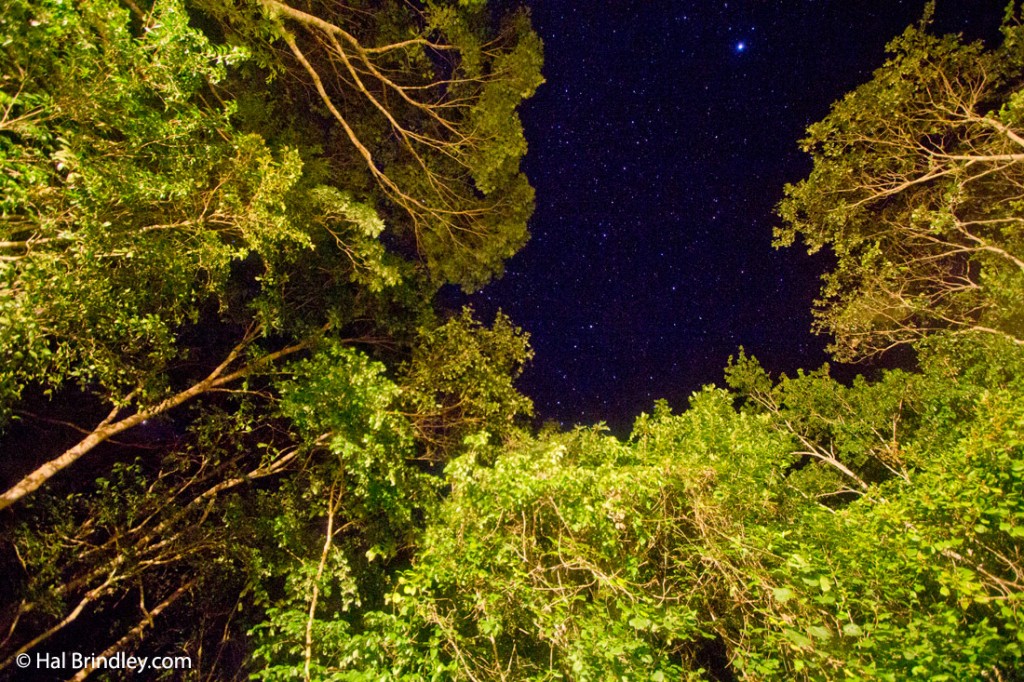
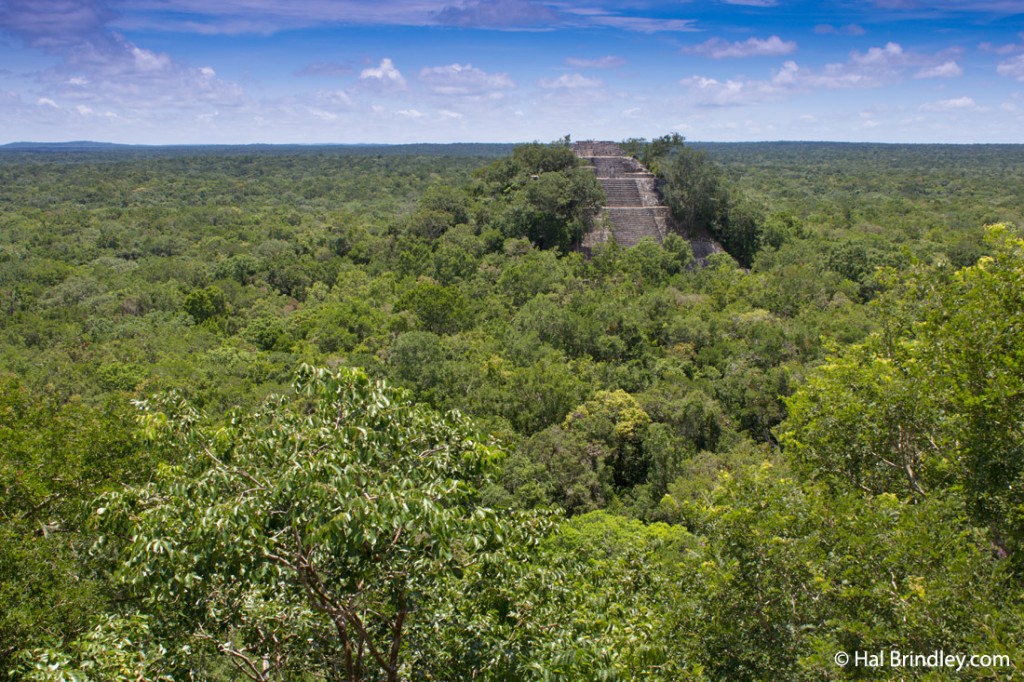
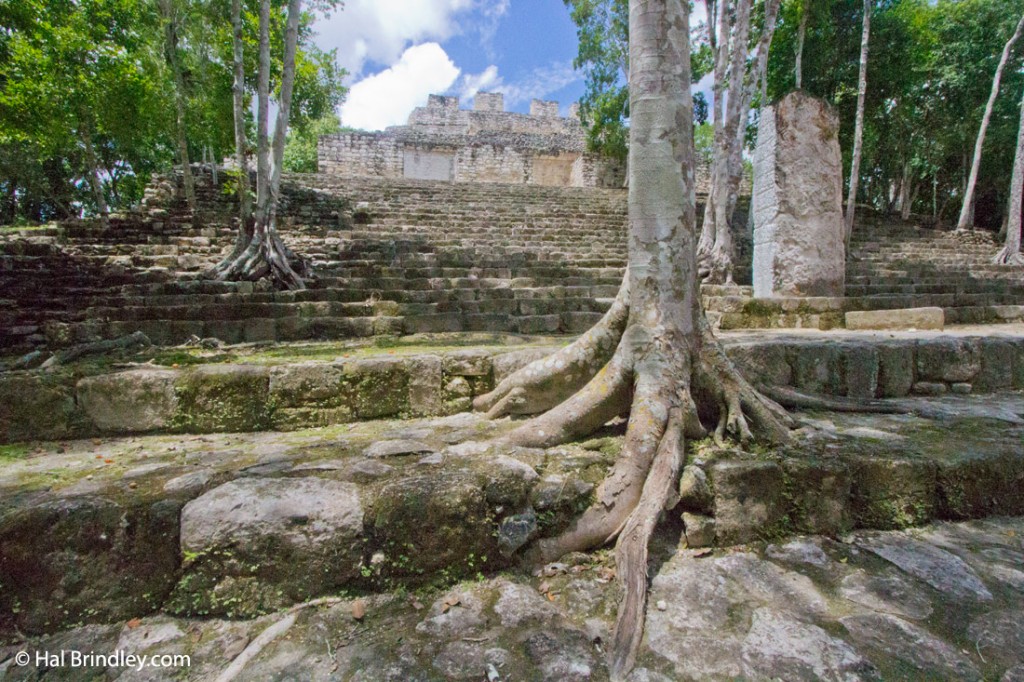
Accomodations at Puerta Calakmul
“Wow, this place is pretty sweet,” I found myself saying for the third time while lying in bed listening to the parrots squawking overhead. This is no shack in the forest. Hotel Puerta Calakmul is a well-appointed jungle retreat. Each room is a separate cabin scattered along a well-maintained path through the woods. Tall thatched roofs cover spacious living spaces. Our unit had two queen-sized beds, a desk, a sink area, a large shower with hot water, and a covered porch with chairs and hammock. There is electricity at all times (something you don’t always get in the wilderness) and even high-speed wi-fi internet available in the restaurant. Large windows, covered with meticulously-maintained screens, provide views of the surrounding forest. Not a single mosquito made it in during our three-day stay, which is impressive considering how many were outside waiting to attack. A large ceiling fan provides plenty of cooling and we had very comfortable sleeping temperatures, even though it was mid-August, the hottest and muggiest part of the year.
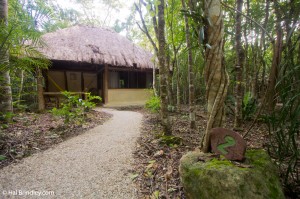
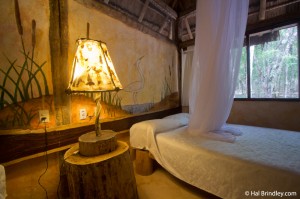
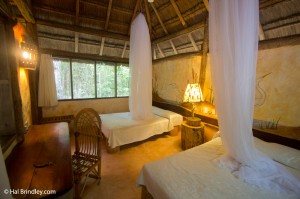
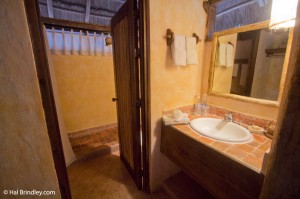
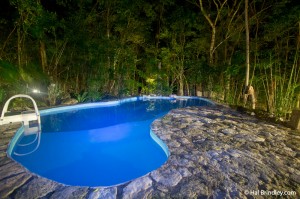
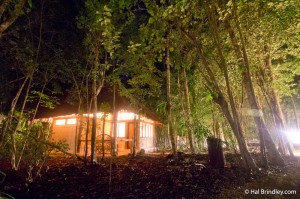
Food
The carved wooden tables are shaped like giant leaves and the food is quite tasty, but the real attraction at Puerta Calakmul’s restaurant is the atmosphere. A very tall thatched roof is surrounded by floor-to-ceiling windows with views of the jungle. Just outside is a small pond, which, during the dry season, attracts multitudes of birds and small mammals and even the occasional tapir. Since we are cheapos, we only ate one meal in the restaurant: chicken quesadillas and a large salad, both nicely done. The rest of the time we lived off refried beans and corn chips in our room. But it was nice to know we had the option of fine dining if we wanted it.
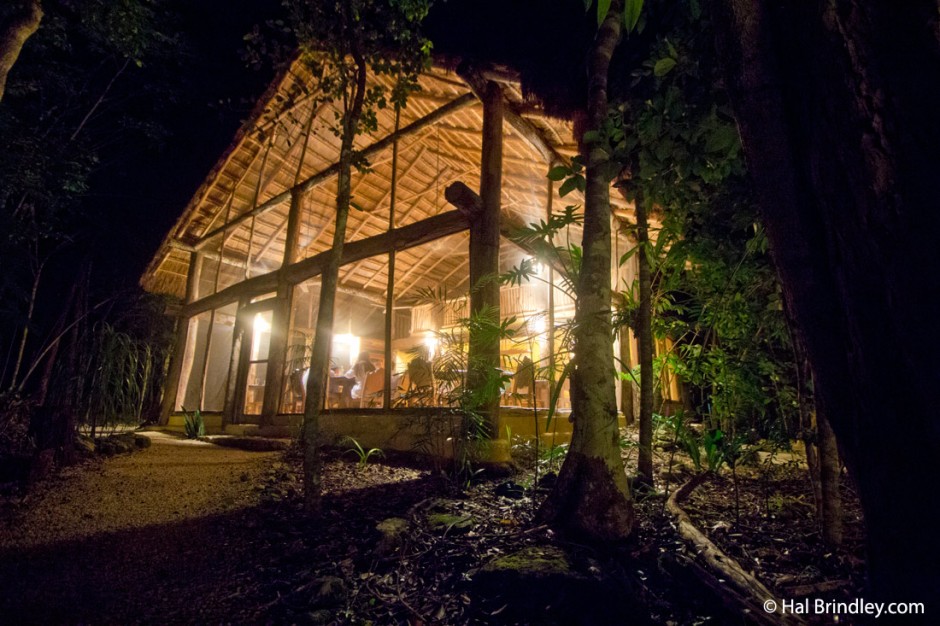
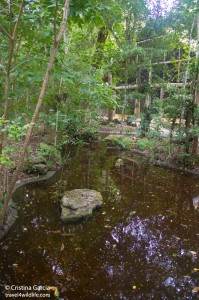
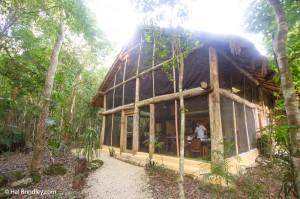
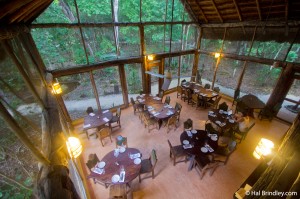
Wildlife at Calakmul
There aren’t many places in the world where you can wake up to the sound of howler monkeys, but Hotel Puerta Calakmul is one. Admittedly, we didn’t hear them during our three-night stay, but with a little luck, you will. There are nature trails around the property and one, we were told, leads to a popular area for howlers. But if you really want to see some creatures, get up just before dawn, hop in your car, and head south down the sixty-kilometer road toward the Calakmul ruins. The local villagers charge a fee to enter the road (we paid roughly $10 US for two people and a car), and then twenty kilometers further you will pay another fee at the gate just before the museum (about $8 US) and finally, to get into the Calakmul ruins themselves, about $3.50 US each. But it’s worth it.
Even though it is a really long road, you can see great wildlife at any point. Roll down your windows (if you can stand the mosquitoes and biting flies), drive slowly, and then watch and listen closely. The forest is thick, so your best chance of seeing ground-dwelling wildlife is on the road itself, or in the small cleared shoulders beside it. Listen for strange rustlings in the branches and stop to examine them. You may discover a troop of spider monkeys passing through, hurtling their bodies with reckless abandon through the treetops. Also watch for a litter of fallen fruits or leaves in the road. This is how we discovered a large band of coatis, a Central American cousin to the raccoon.
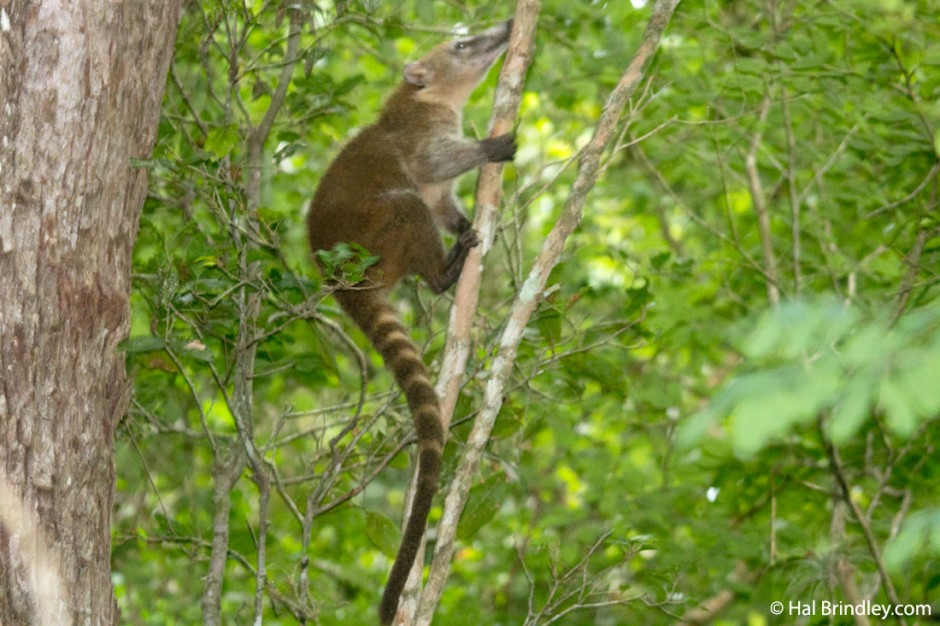
Scan the trees for birds on the move such as parrots and toucans and listen closely for their calls. It helps to stop at the surprisingly excellent museum along the way and listen to their collection of bird call recordings. You are likely to see ocellated turkeys crossing the road and keep your eyes peeled for furry little black blobs moving across the pavement. Pull over and take a careful look at the large and beautiful Mexican Red-rump Tarantula (read our four facts article here). We had a few other nice sightings during the two days we drove this road, including two gray foxes, a couple agoutis and even a tiny Yucatan Brown Brocket Deer.
Once you get to the actual ruins, make your way to Structure II and climb the largest Maya pyramid ever built. It’s a great place to eat your picnic lunch. Spend the rest of your time wandering around the grounds and listening for rustling in the trees. We spotted howler monkeys, spider monkeys, ocellated turkeys, basilisk lizards, leaf-cutter ants, and hundreds of beautiful butterflies. On our second day, we didn’t bother entering the grounds of the ruins (and paying the fee again). Instead we just cruised the road and occasionally got out to stroll some side trails until the mosquitoes would drive us back in.
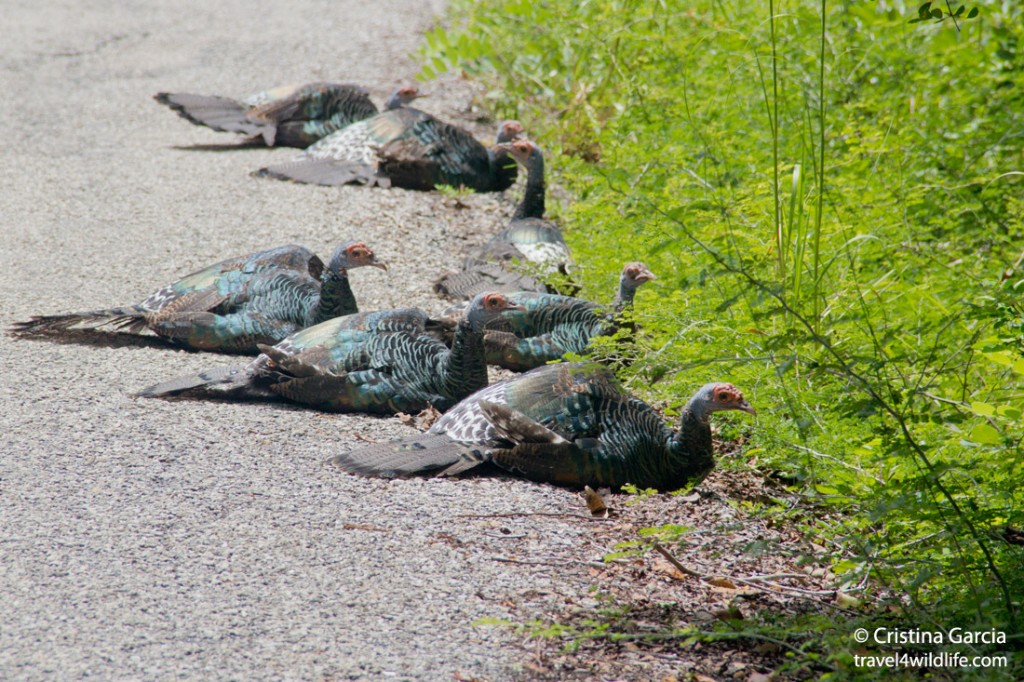
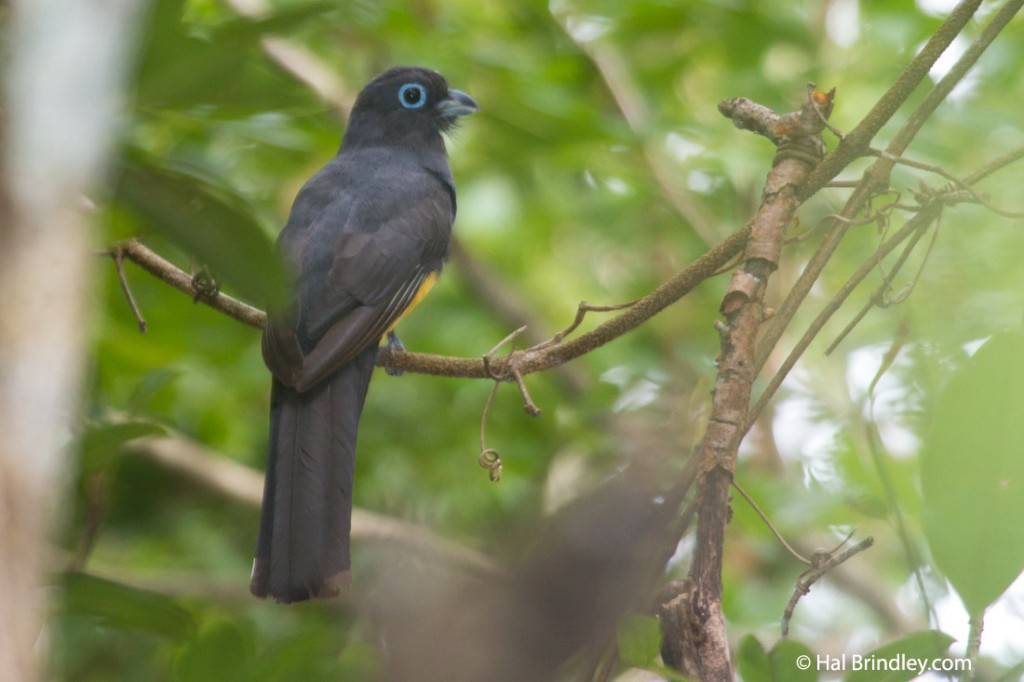
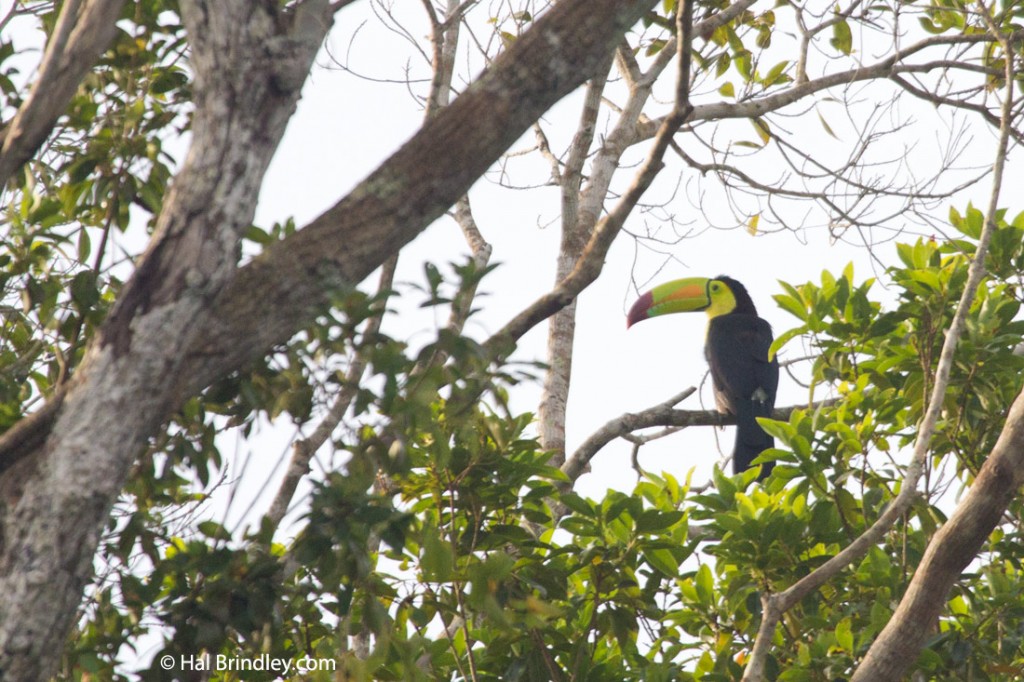
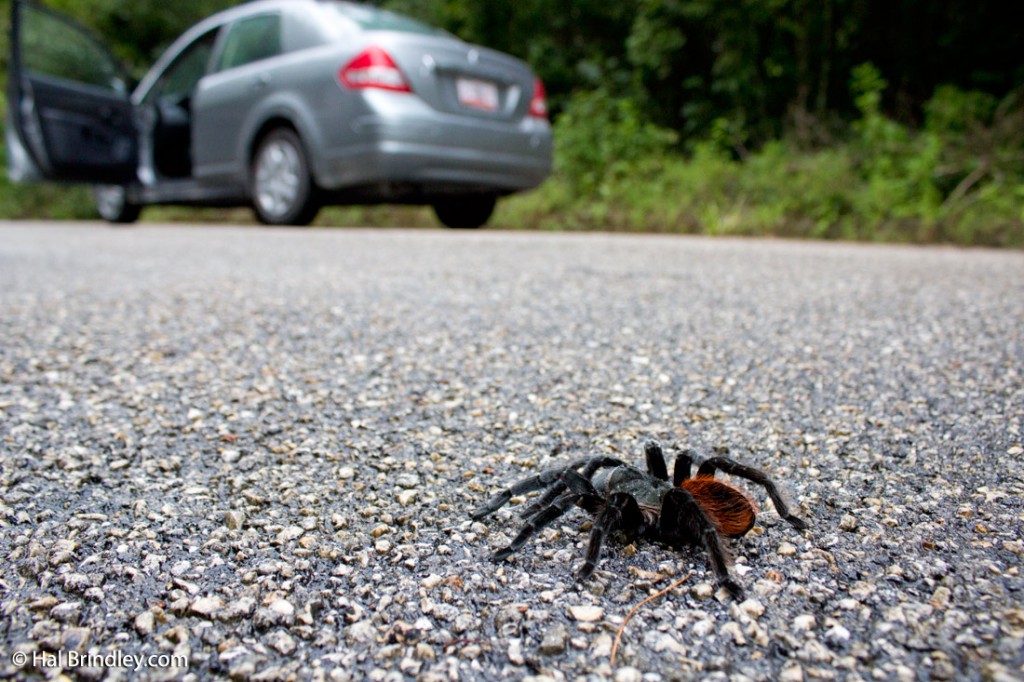
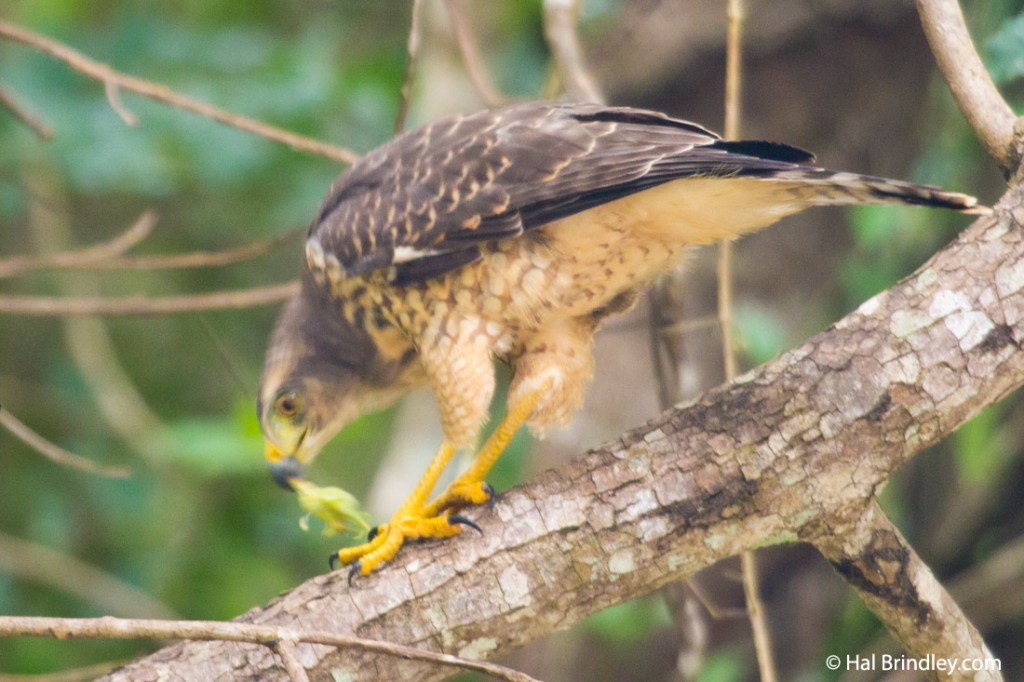
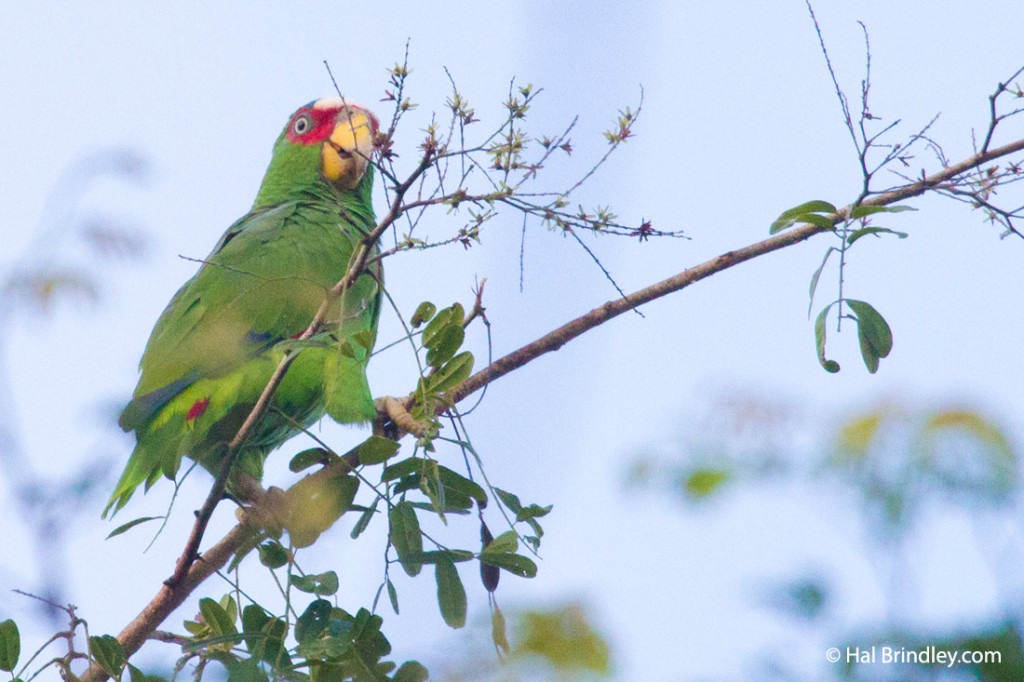
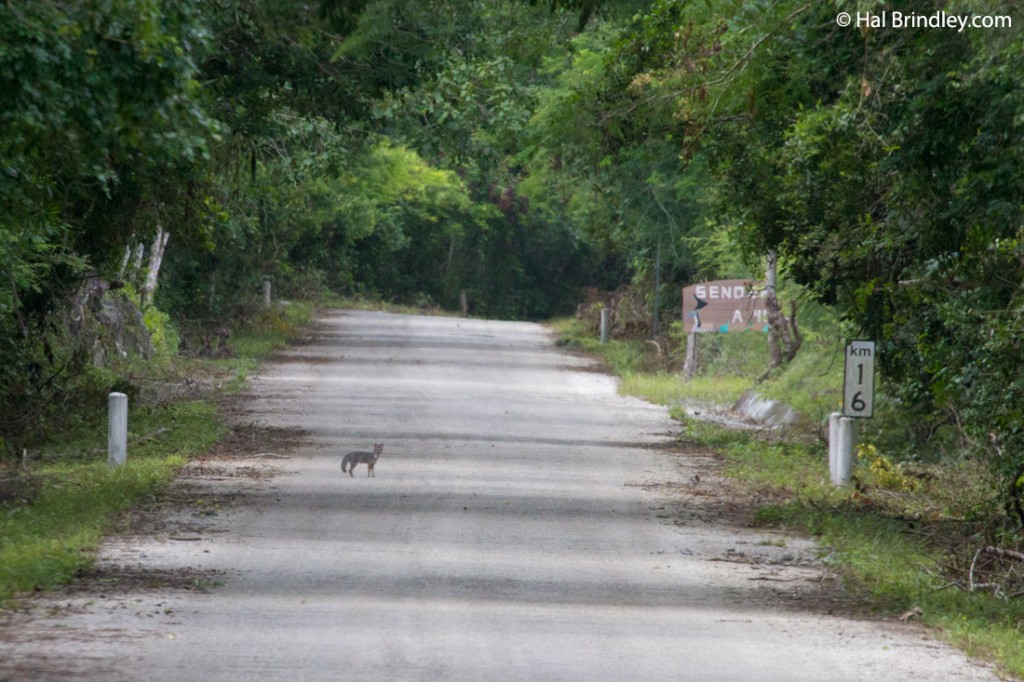
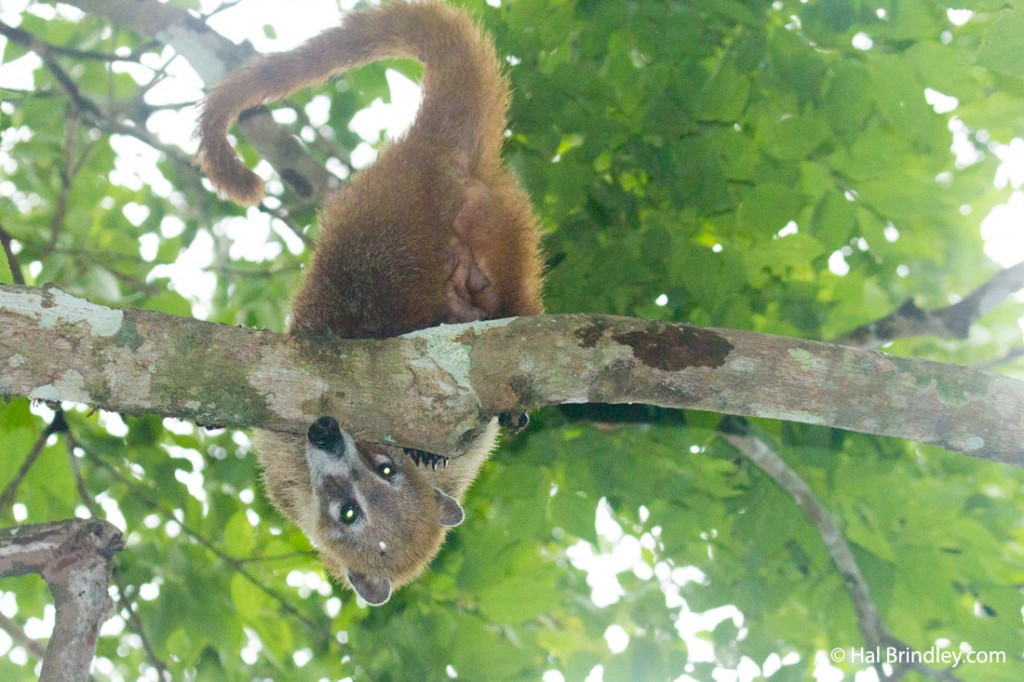
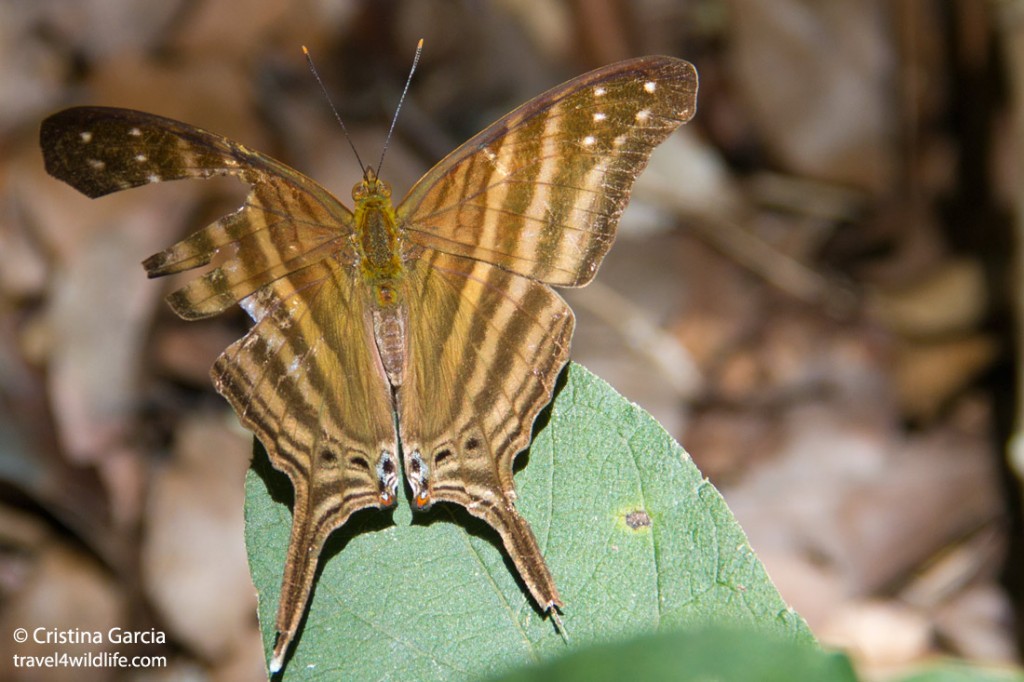
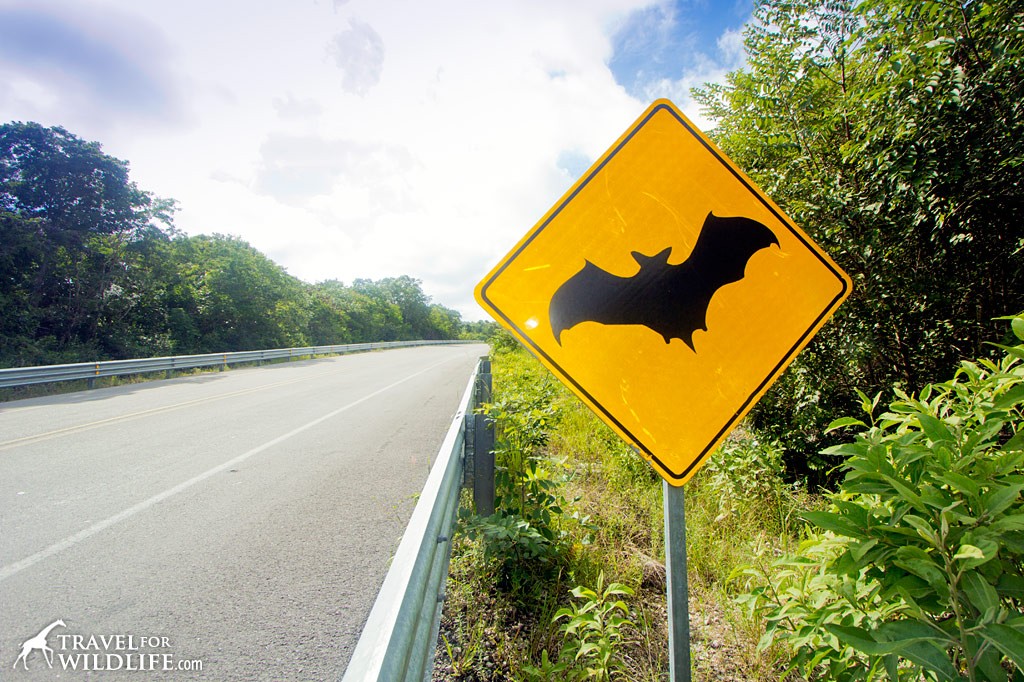
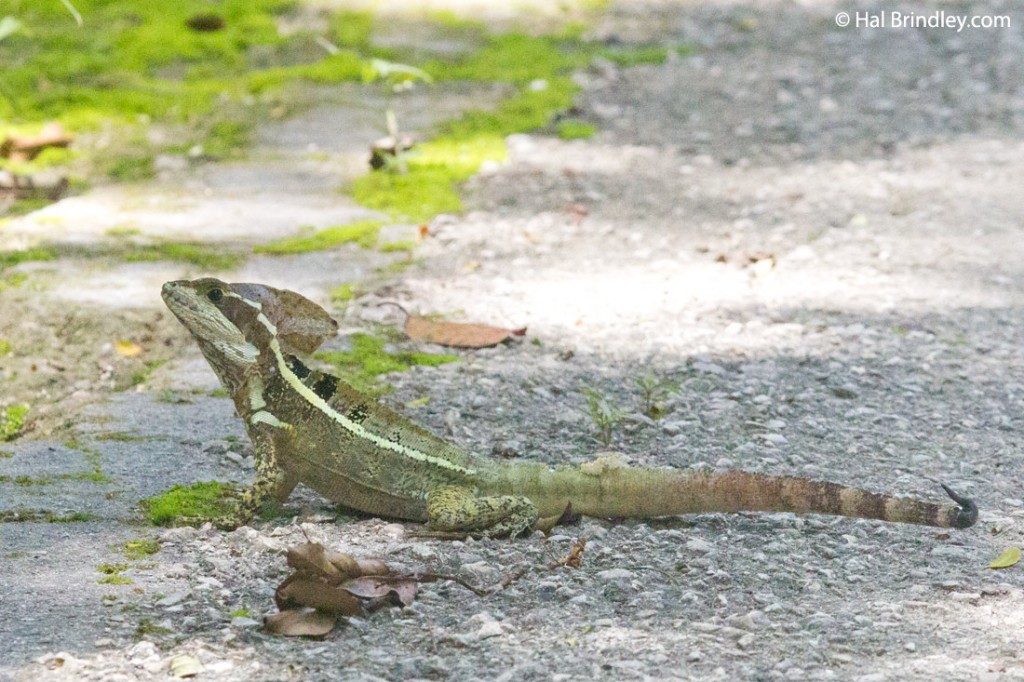
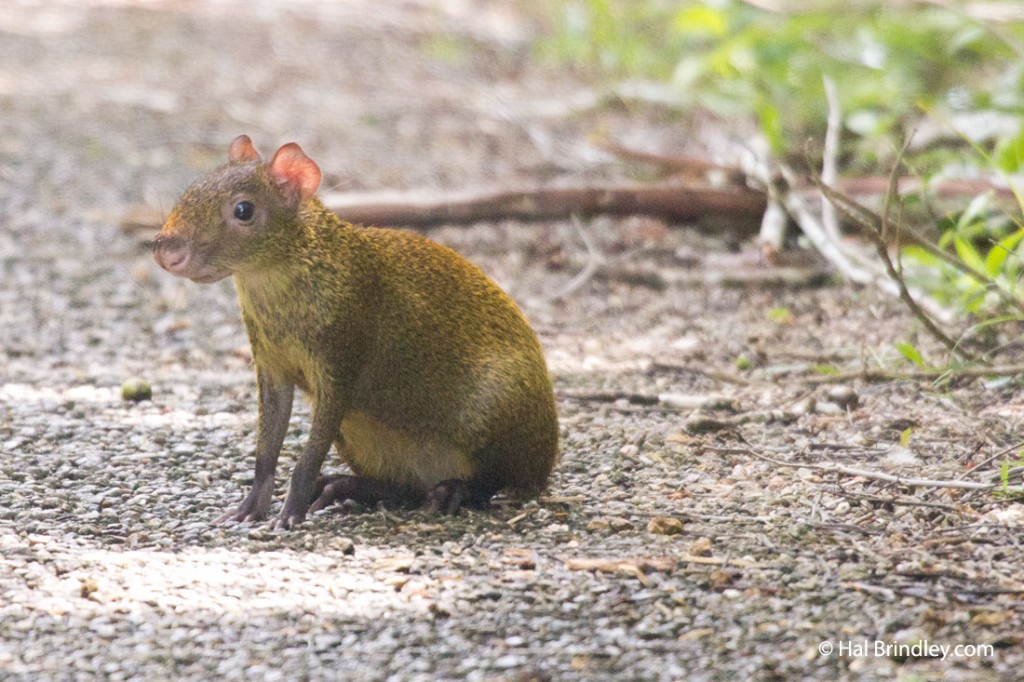
Verdict
Our stay at Hotel Puerta Calakmul was top notch. Getting into some real tropical forest was a pleasant change of pace from the rest of our Yucatan beach tour. And even though we didn’t manage to see a jaguar, we did see a lot of great wildlife in two short days. Many thanks to Hotel Puerta Calakmul for a comfortable stay in a beautiful place. For more information about Hotel Puerta Calakmul, visit their website at puertacalakmul.com.mx
Disclosure: Though we did receive lodging in exchange for this review, the opinions expressed herein are entirely our own.

Hal Brindley
Brindley is an American conservation biologist, wildlife photographer, filmmaker, writer, and illustrator living in Asheville, NC. He studied black-footed cats in Namibia for his master’s research, has traveled to all seven continents, and loves native plant gardening. See more of his work at Travel for Wildlife, Truly Wild, Our Wild Yard, & Naturalist Studio.

